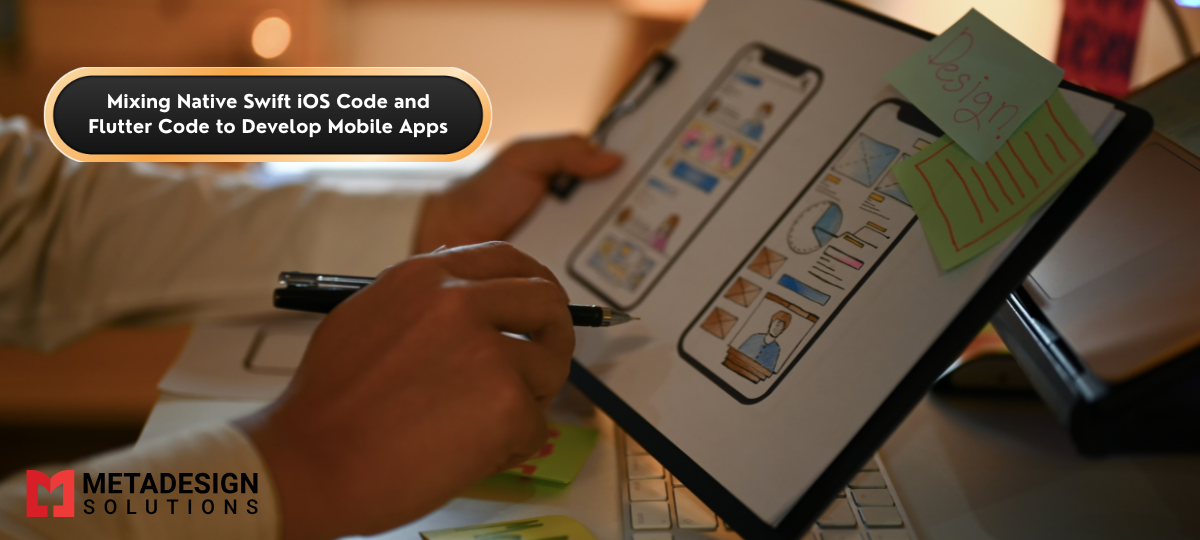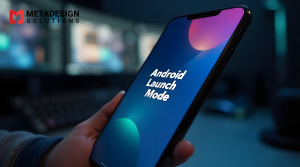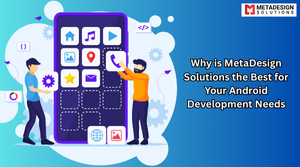Mobile app development has been revolutionized by the introduction of hybrid app development platforms like Flutter, which have made it possible to build cross-platform apps using a single codebase. Flutter, which was introduced by Google in 2017, has gained widespread popularity among developers and businesses alike for its ability to create high-performance, visually appealing apps for both Android and iOS platforms. However, many businesses and developers have invested significant resources in building native apps for iOS using Swift,
and would prefer to continue using this technology. In this blog, we’ll explore how to mix native Swift iOS code and Flutter code to develop mobile apps that leverage the best of both worlds.
Native App Development with Swift
Swift is a modern, multi-paradigm programming language developed by Apple for iOS, macOS, watchOS, and tvOS. Swift is designed to be safe, fast, and interactive, making it an ideal language for developing native apps for iOS. If you’re looking to leverage its full potential, you can Hire iOS App Developers skilled in Swift to build robust, high-performance applications. Swift offers a host of features that make it easy to write maintainable code, including type inference, optionals, and automatic memory management. It also provides a rich set of libraries and frameworks like UIKit, Core Data, and Core Animation for building powerful, feature-rich apps.
Flutter Development Services
Flutter is an open-source mobile app development framework developed by Google. Flutter allows developers to build high-performance, visually appealing apps for both Android and iOS platforms using a single codebase. Flutter provides a rich set of widgets and tools that enable developers to create beautiful, responsive, and fast user interfaces. Flutter also offers a hot-reload feature that allows developers to make changes to the code and see the results in real-time, making the development process faster and more efficient.
Mixing Native Swift iOS Code and Flutter Code
One of the major benefits of using Flutter is its ability to integrate with native code. Flutter provides a set of APIfs that allow developers to call native code from within Flutter code and vice versa. This makes it possible to mix native Swift iOS code and Flutter code to develop
mobile apps that leverage the strengths of both technologies. For example, a developer can use Swift to write native code for iOS-specific features, such as push notifications or in-app purchases, and use Flutter to build the user interface and business logic for the app.
To mix native Swift iOS code and Flutter code, developers must follow a few simple steps:
Create a Flutter project using the Flutter CLI or the Flutter IDE plugin for Visual Studio Code or IntelliJ IDEA.
Create a new iOS project in Xcode and add the necessary Swift code for the app’s functionality.
Create a Flutter plugin that exposes the Swift code as a Flutter API.
Use the Flutter plugin in the Flutter project to call the Swift code from within Flutter code.
Here’s an example of how to create a Flutter plugin that exposes native Swift code as a Flutter API:
Create a new Xcode project and add the necessary Swift code for the app’s functionality.
Create a new Flutter plugin using the Flutter CLI or the Flutter IDE plugin for Visual Studio Code or IntelliJ IDEA.
Add the Swift code to the Flutter plugin project.
Use the Flutter plugin in the Flutter project to call the Swift code from within Flutter code.
Here’s an example of how to call native Swift code from Flutter code:
import 'package:flutter/services.dart';
final MethodChannel methodChannel = MethodChannel('my_channel');
Future myMethod() async {
try {
await methodChannel.invokeMethod('my_method');
} on PlatformException catch (e) {
print('Error: $e');
}
}
Optimize Your App with Swift and Flutter
Ready to leverage both Swift and Flutter in your mobile app? Book a consultation today to explore how we can create a seamless hybrid app with these technologies.
In this example, we create a new MethodChannel object, which is used to communicate between the Flutter code and the native Swift code. We define a method called myMethod which uses the invokeMethod function of the methodChannel object to call a method called my_method in the native Swift code. If an error occurs, we print the error to the console.
Here’s an example of how to call Flutter code from native Swift code:
import 'package:flutter/services.dart';
final MethodChannel methodChannel = MethodChannel('my_channel');
Future myMethod() async {
try {
await methodChannel.invokeMethod('my_method');
} on PlatformException catch (e) {
print('Error: $e');
}
}
In this example, we create a new FlutterMethodChannel object, which is used to communicate between the native Swift code and the Flutter
code. We use the invokeMethod function of the methodChannel object to call a method called my_flutter_method in the Flutter code. We
can pass arguments to the Flutter code by passing a dictionary of key-value pairs as the second argument to the invokeMethod function.
Finally, we provide a closure to handle the result returned from the Flutter code.
One important thing to keep in mind when mixing native Swift iOS code and Flutter code is to ensure proper communication between the
two. As shown in the examples above, Flutter provides a set of APIs that allow developers to call native code from within Flutter code
and vice versa. This makes it possible to create a seamless integration between the two technologies.
Another important consideration is to ensure that the app is tested thoroughly to ensure that it functions properly on both platforms.
While mixing native Swift iOS code and Flutter code can provide many benefits, it can also introduce complexity to the app development
process. As a result, it is important to have a robust testing process in place to catch any bugs or issues that may arise during development.
In summary, mixing native Swift iOS code and Flutter code is a powerful approach to mobile app development that can provide many
benefits. By leveraging the strengths of both technologies, developers can create high-performance, visually appealing apps that meet the needs of their users. As a Flutter development services provider, we encourage businesses and developers to explore this approach to mobile
app development and to consider working with experienced developers who can help guide them through the process.
Related Keyphrase:
#Flutter #Swift #iOSDevelopment #MobileAppDevelopment #CrossPlatformDevelopment #FlutterAndSwift #NativeSwiftCode #FlutterCode #MobileAppSolutions #FlutterAppDevelopment #CustomMobileAppDevelopment #FlutterDevelopment #iOSAppDevelopment #MobileUX #AppDevelopmentCompany #TechSolutions #HireFlutterDevelopers #HireiOSDevelopers #AppDevelopmentServices #NativeAppDevelopment #TechInnovation #HybridAppDevelopment #CrossPlatformApp #iOSDevelopmentCompany #FlutterIntegration #TechConsulting #MobileAppDevelopmentCompany #SoftwareDevelopmentServices #AppDevelopmentExperts #FlutterForiOS #MobileAppIntegration #FlutterServices #SwiftForFlutter #AppSolutions #HireAppDevelopers #NativeAndFlutter #MobileAppDesign #CustomAppDevelopment #MobileAppExperts #TechInMobile #AppDevelopmentExperts #AppIntegration



